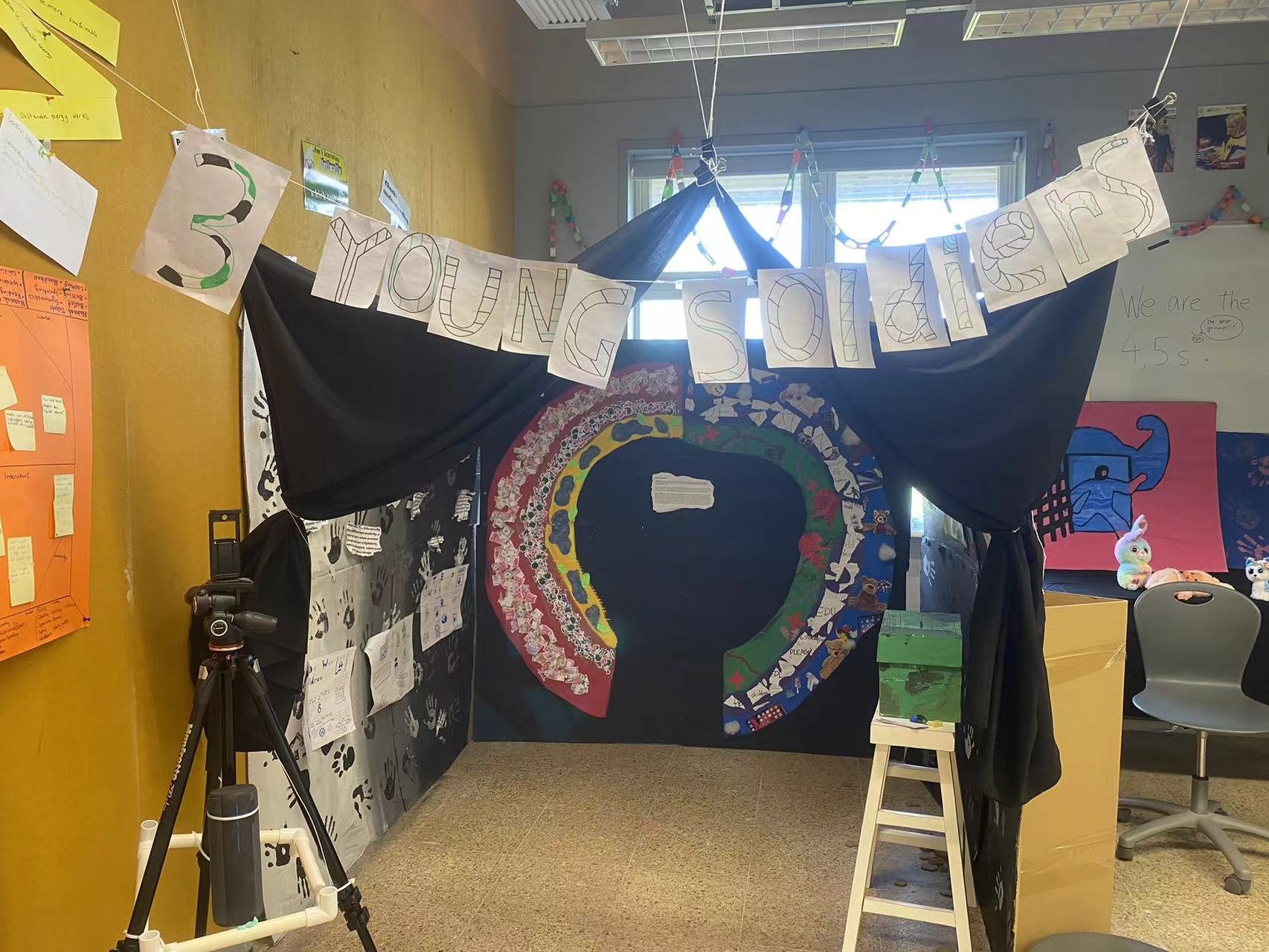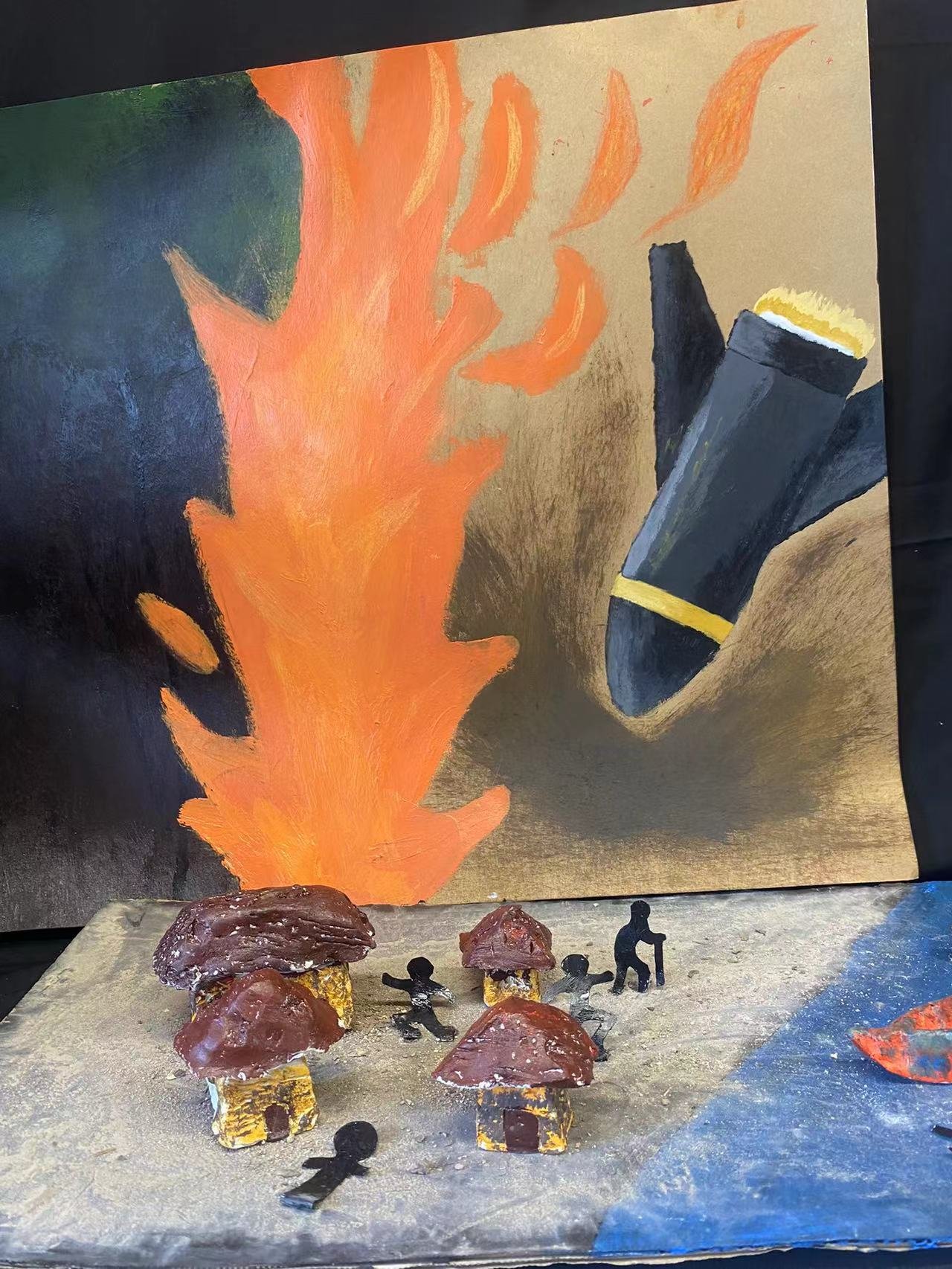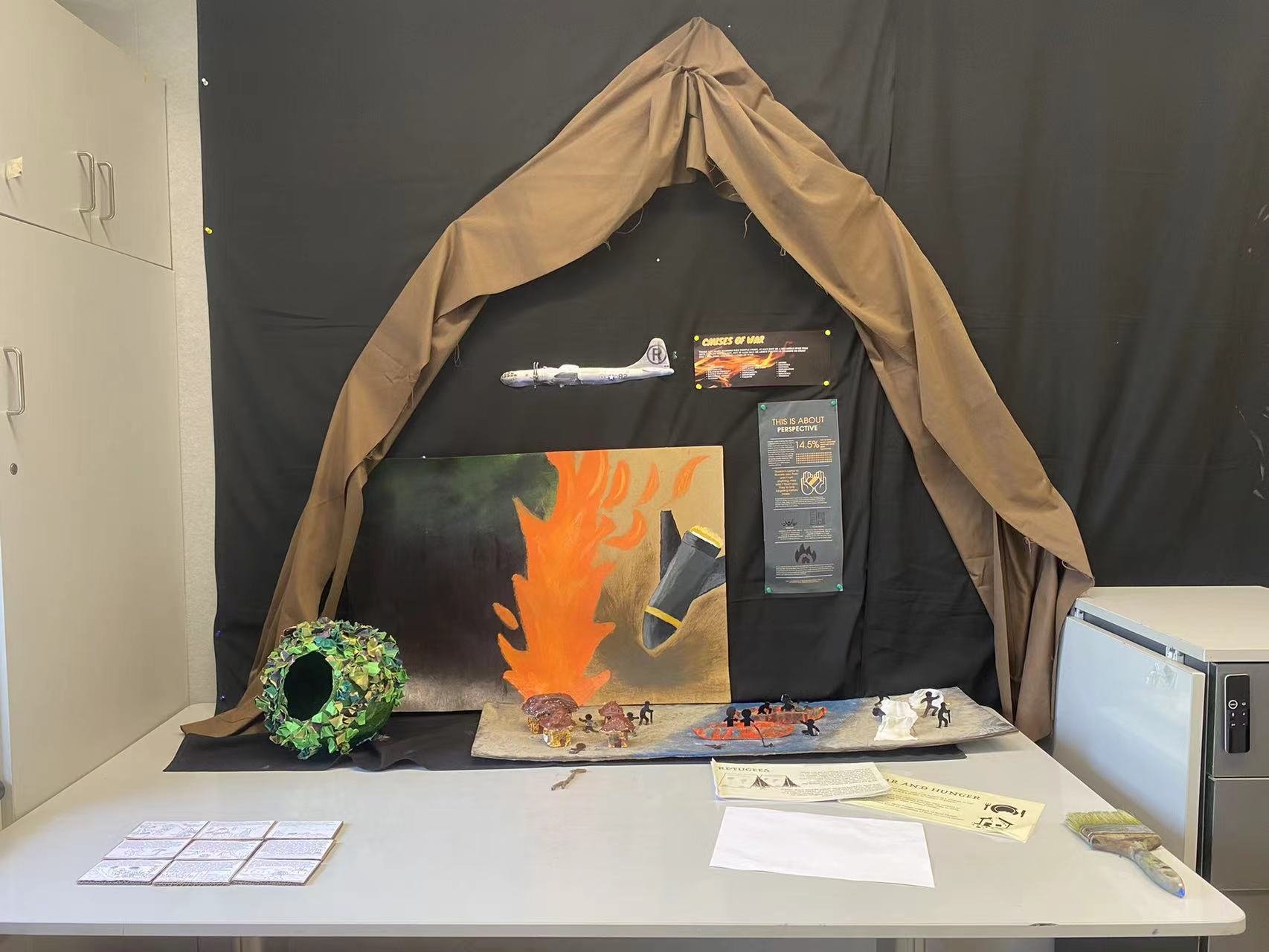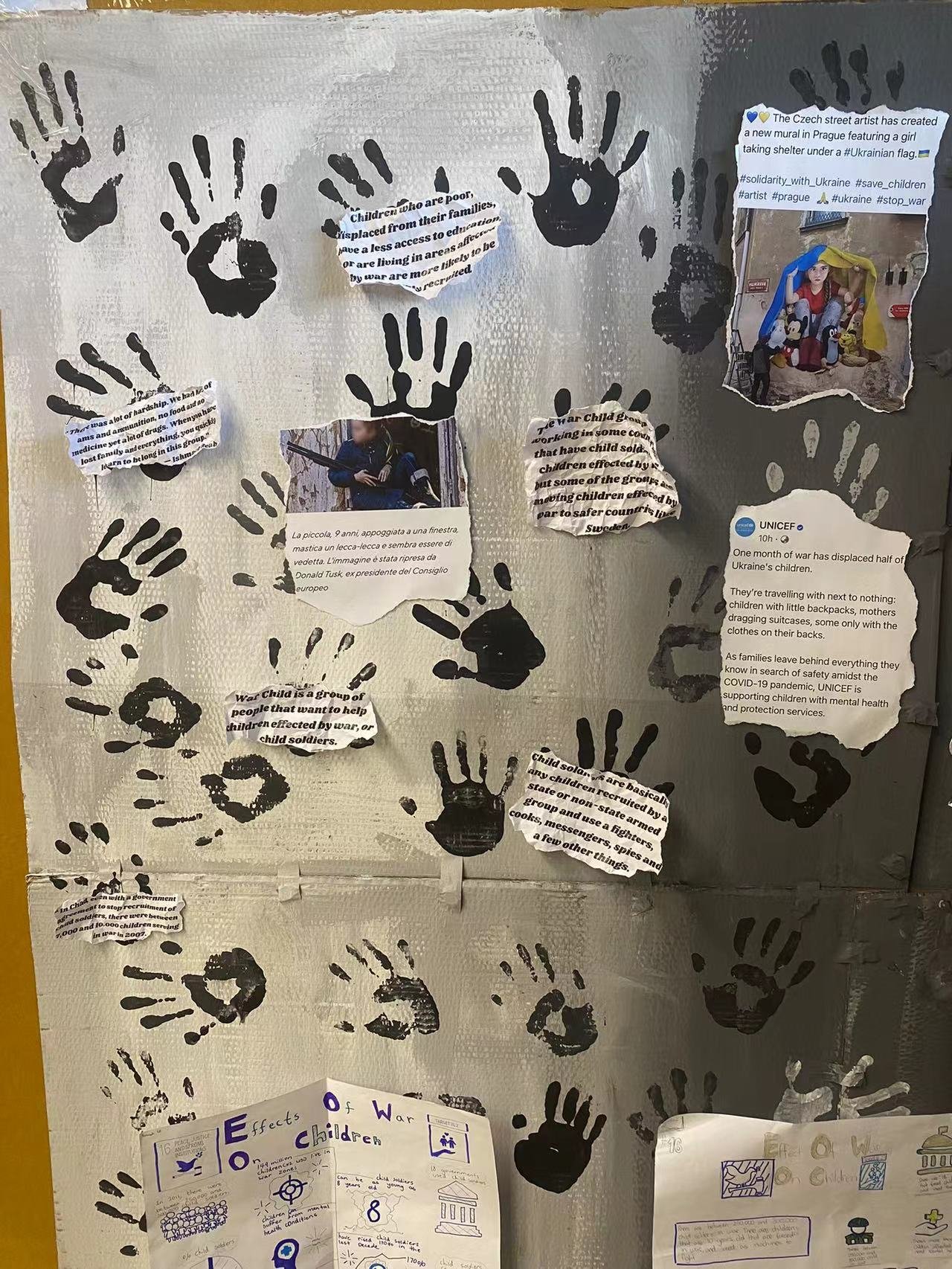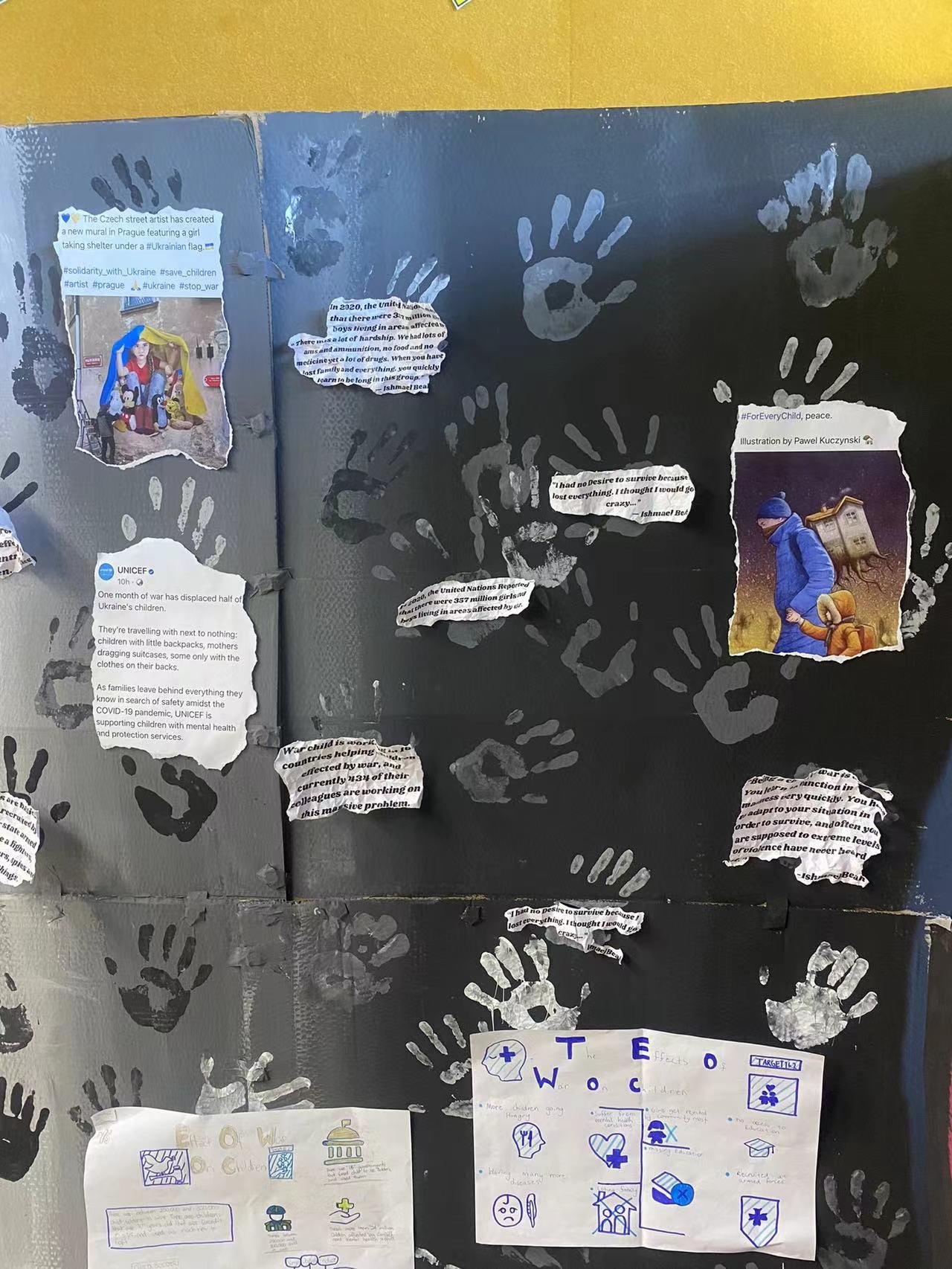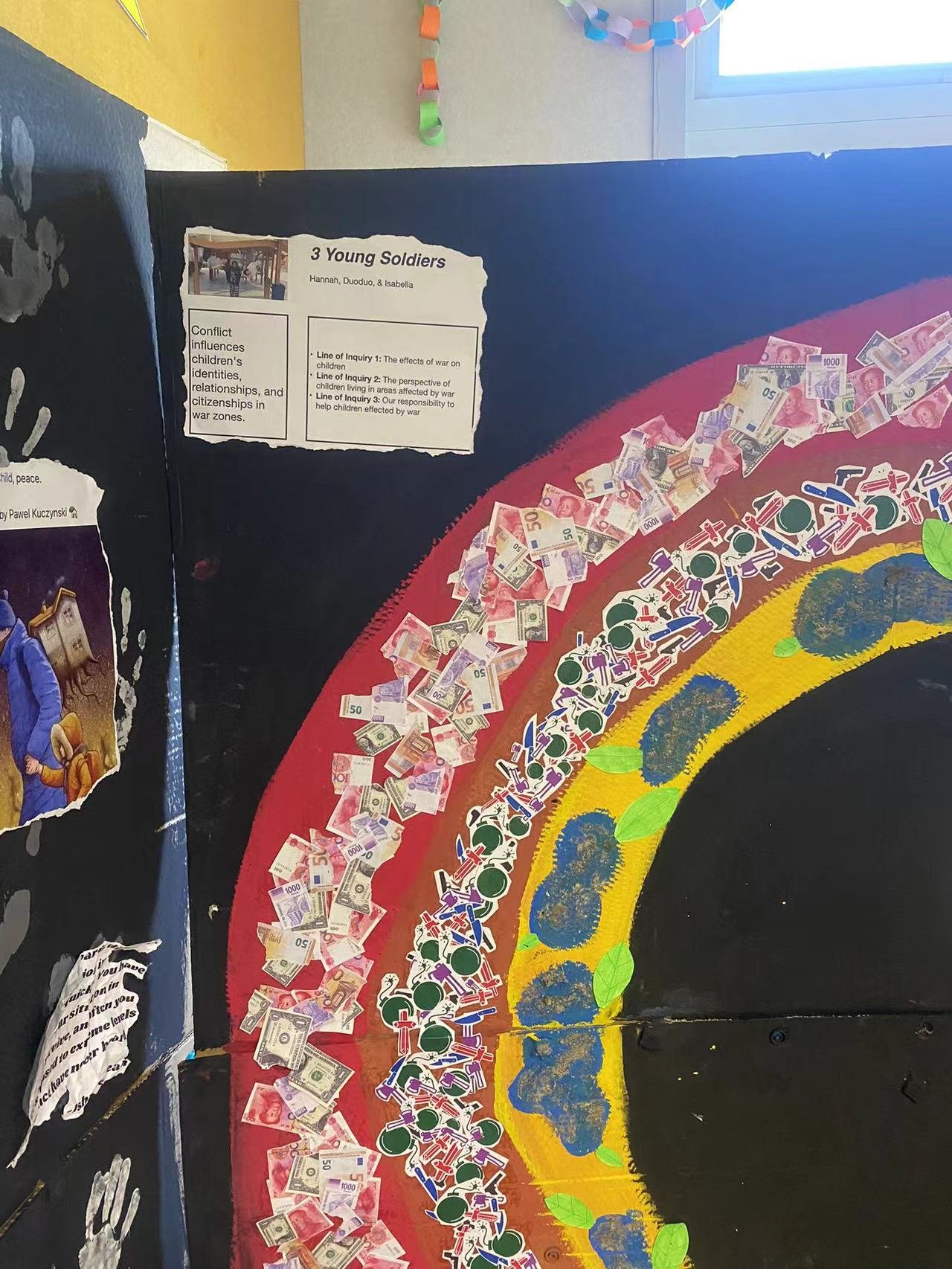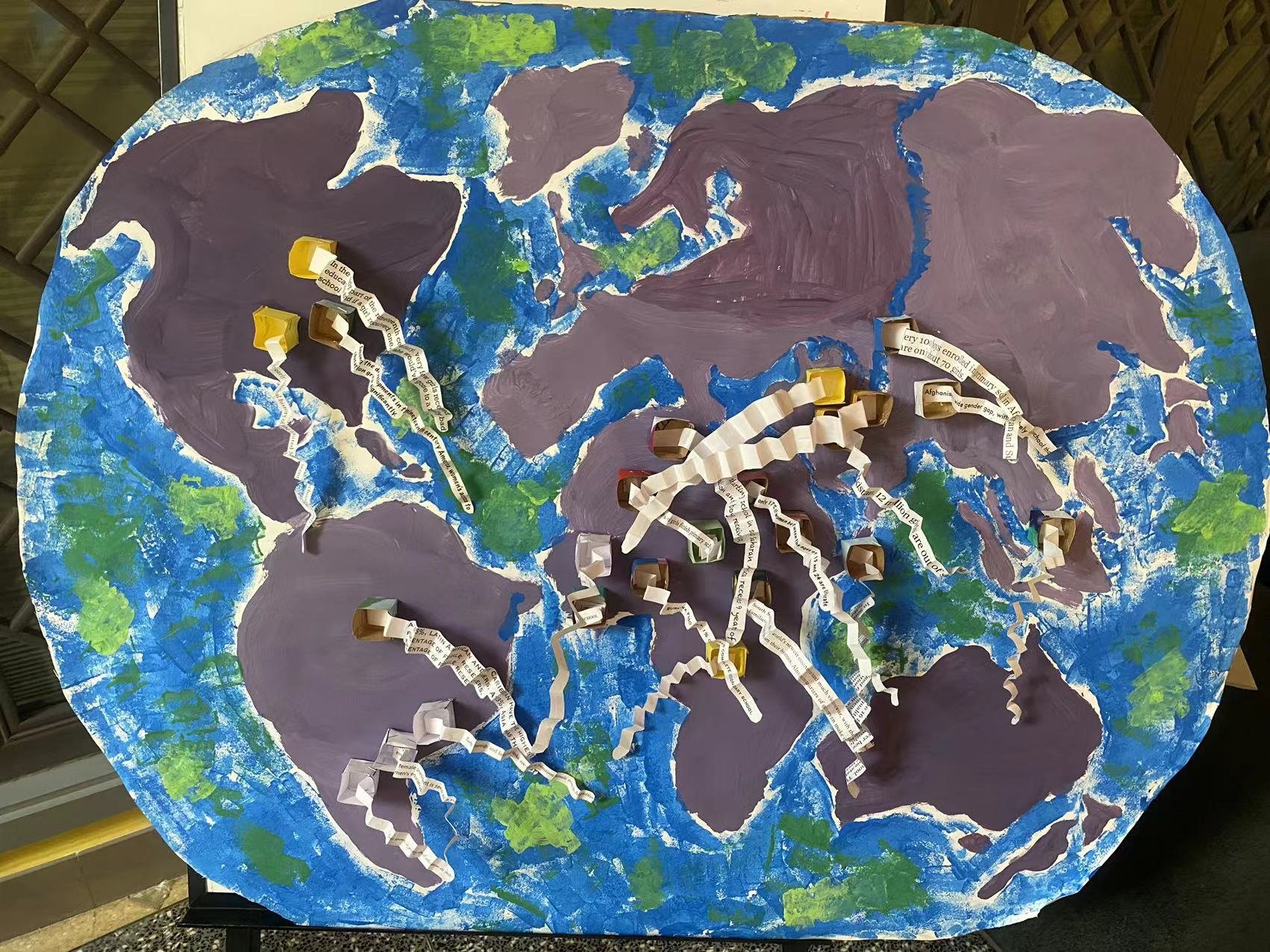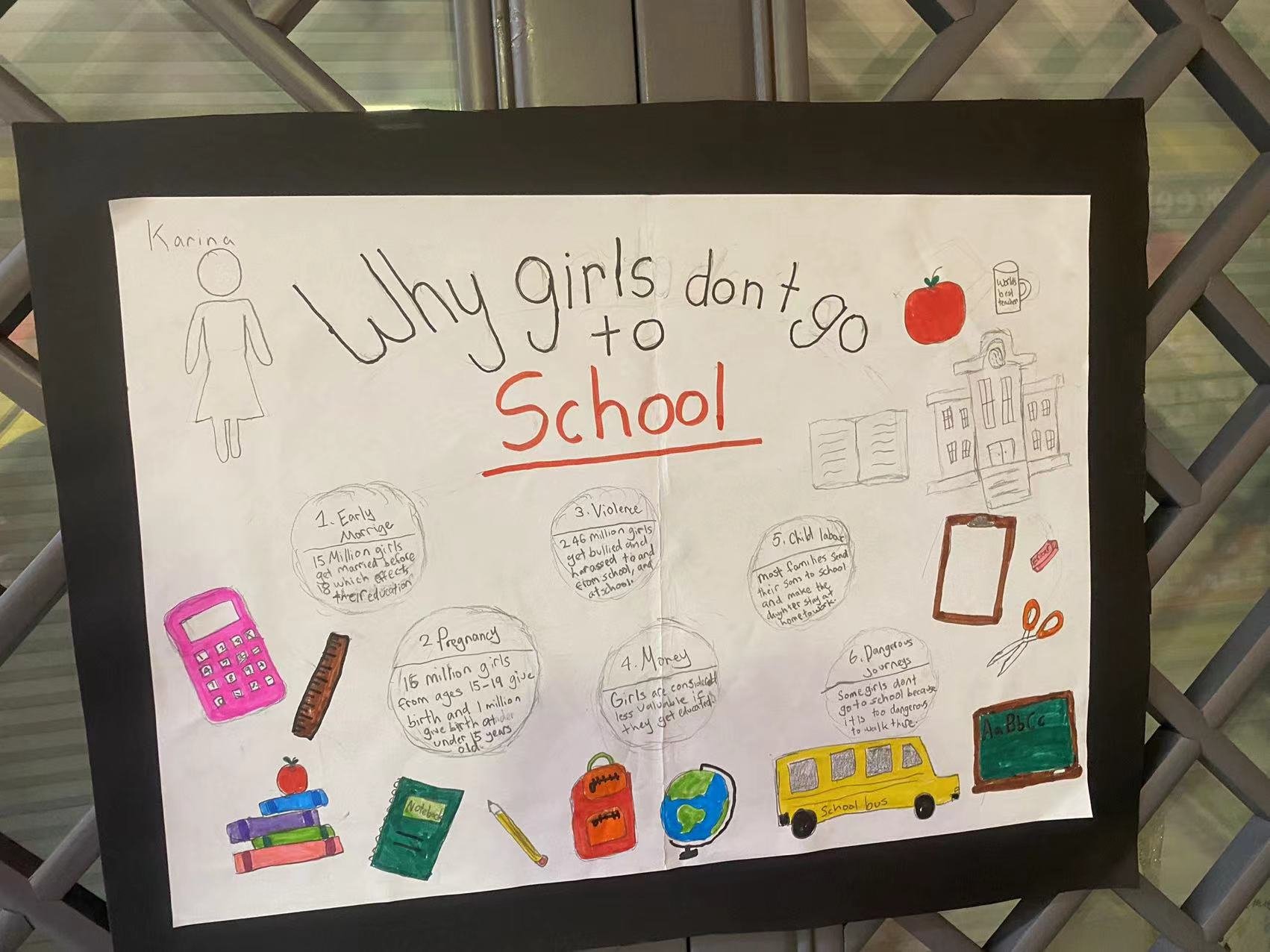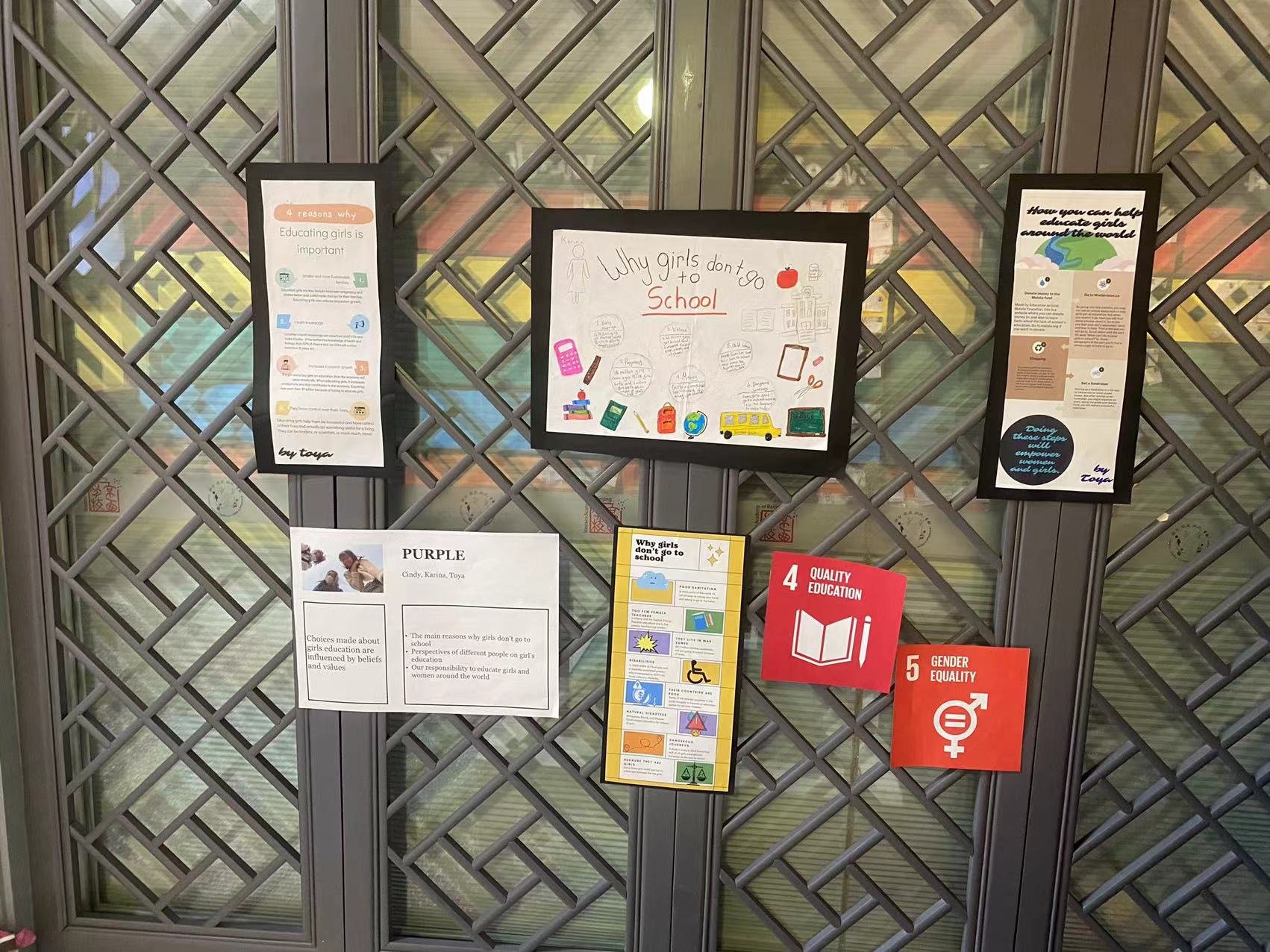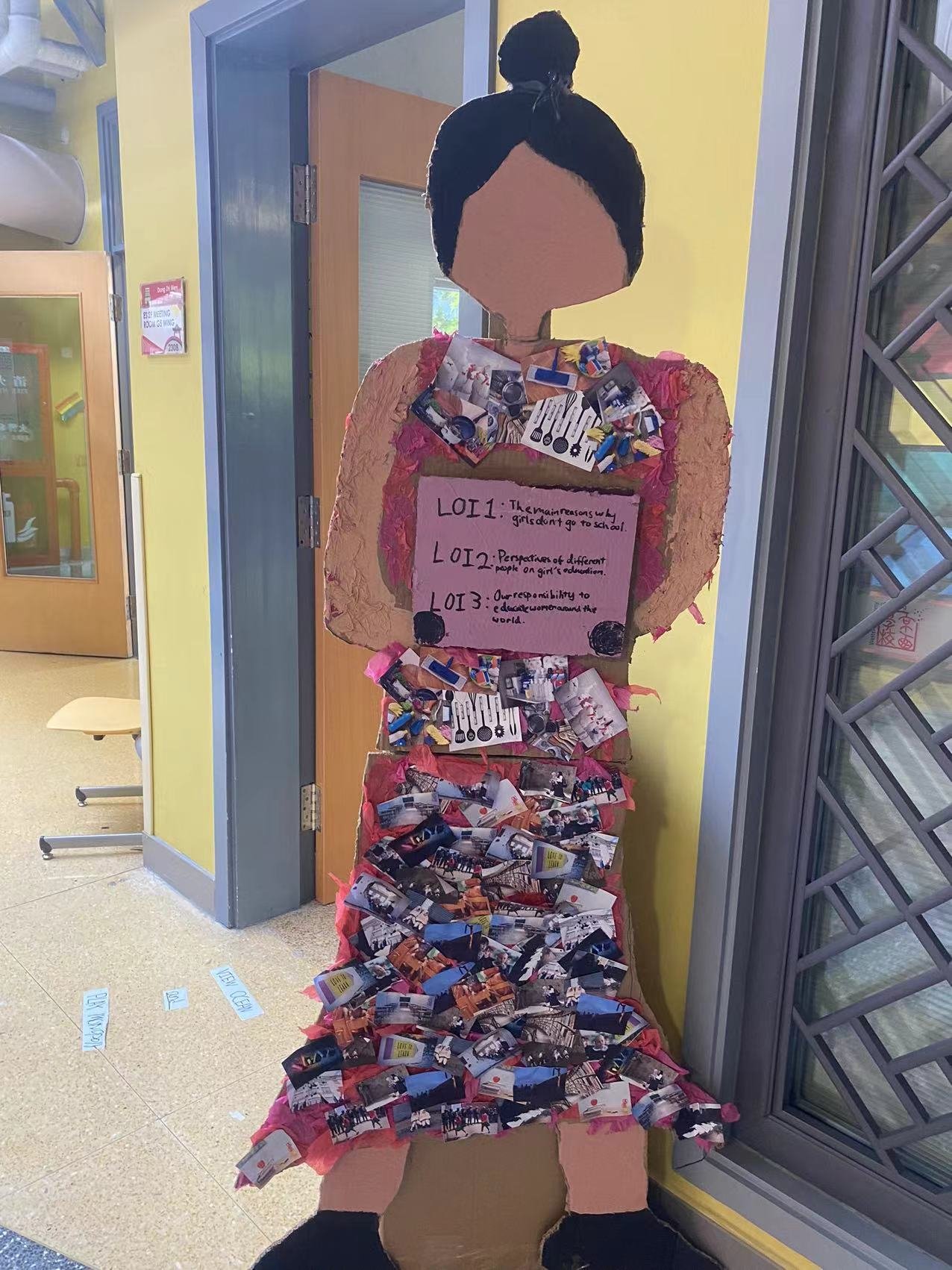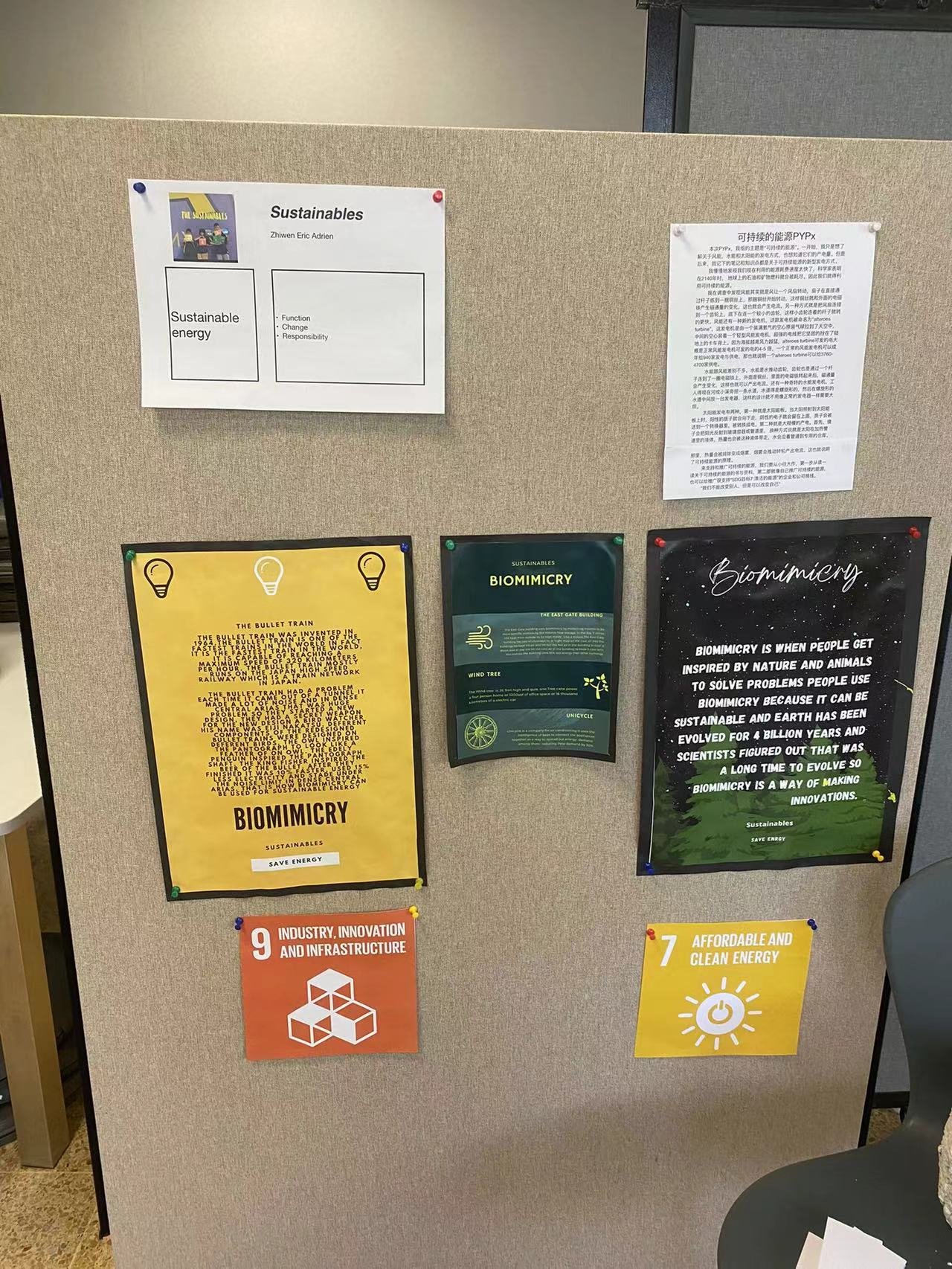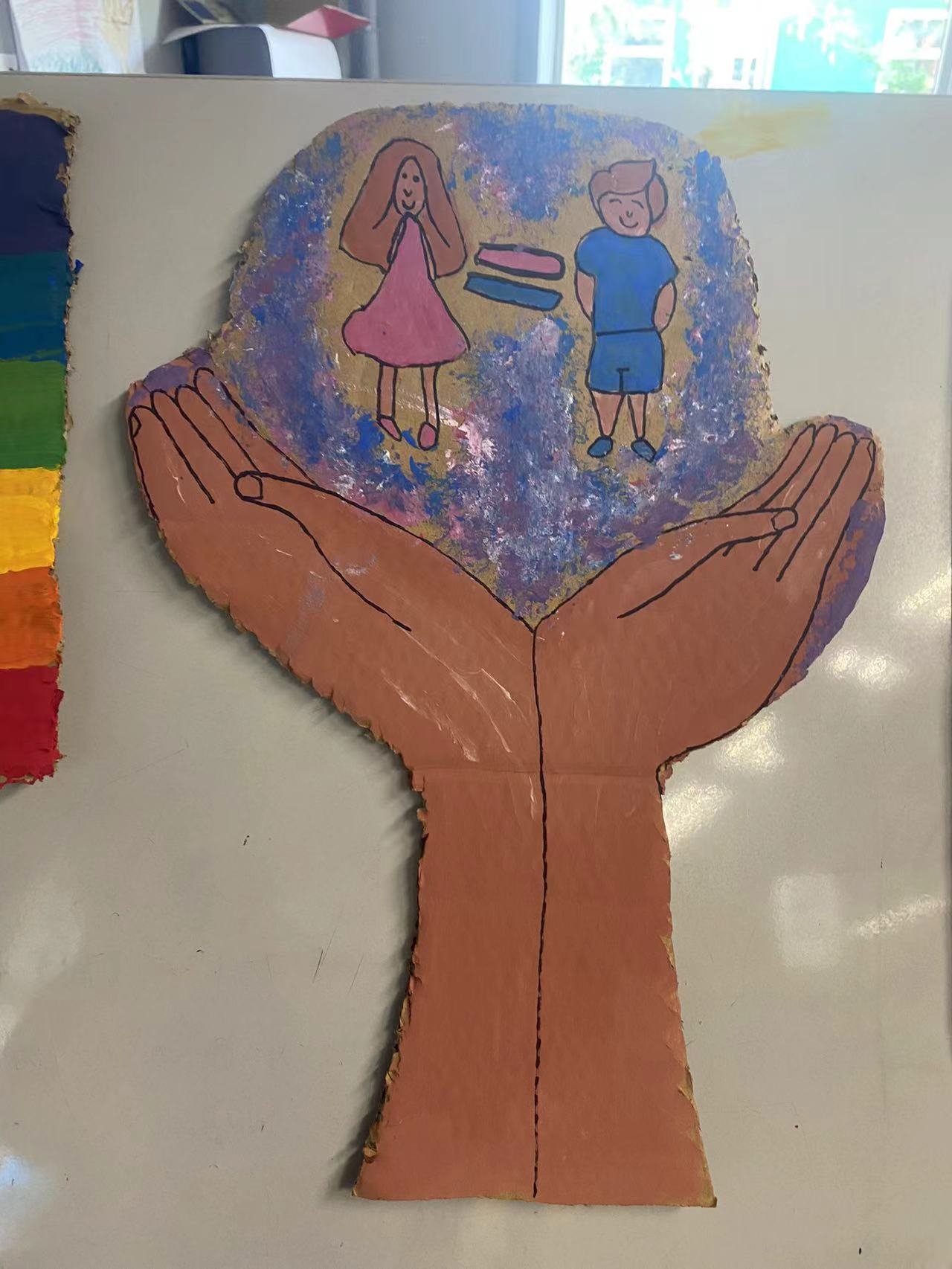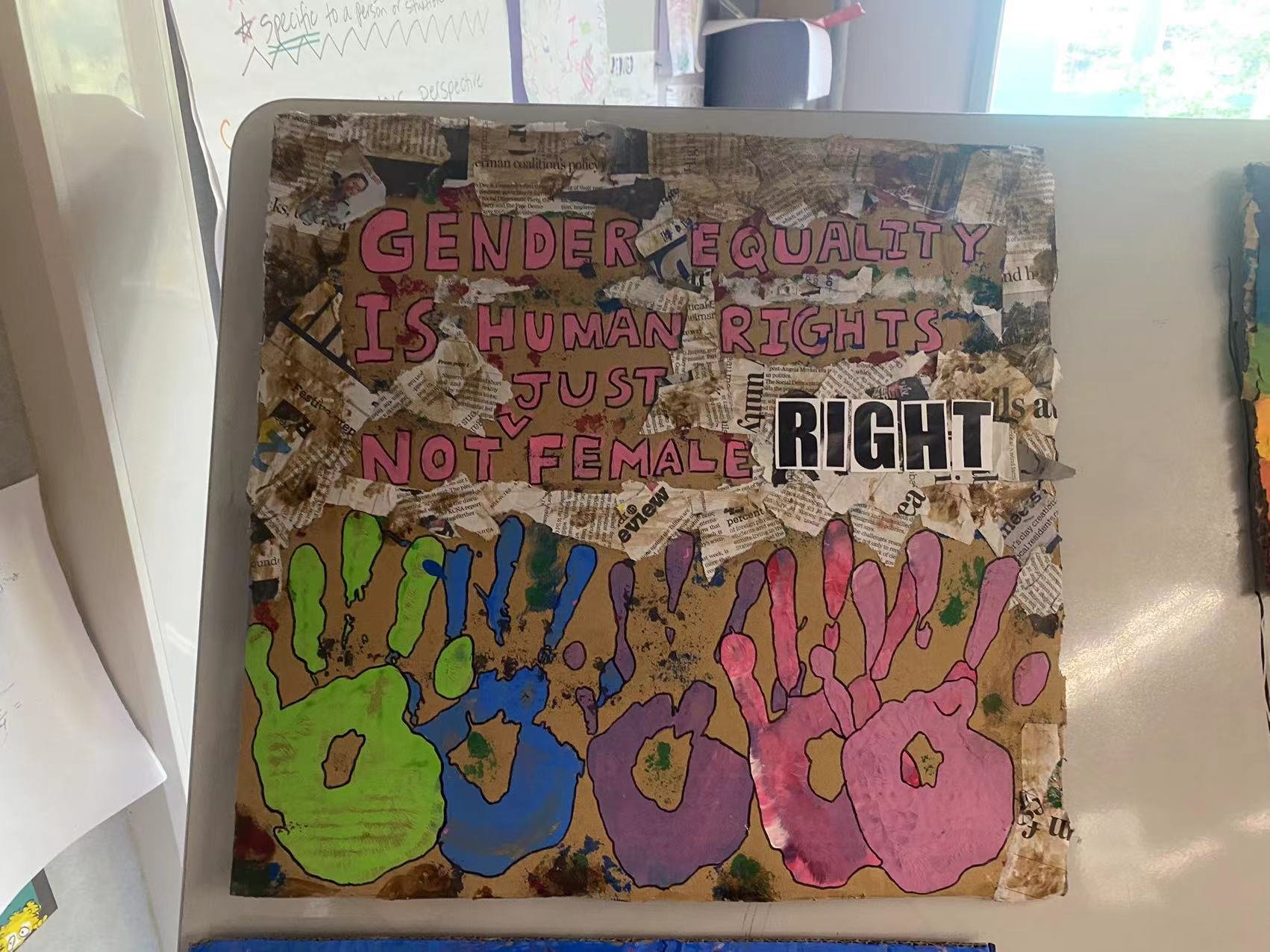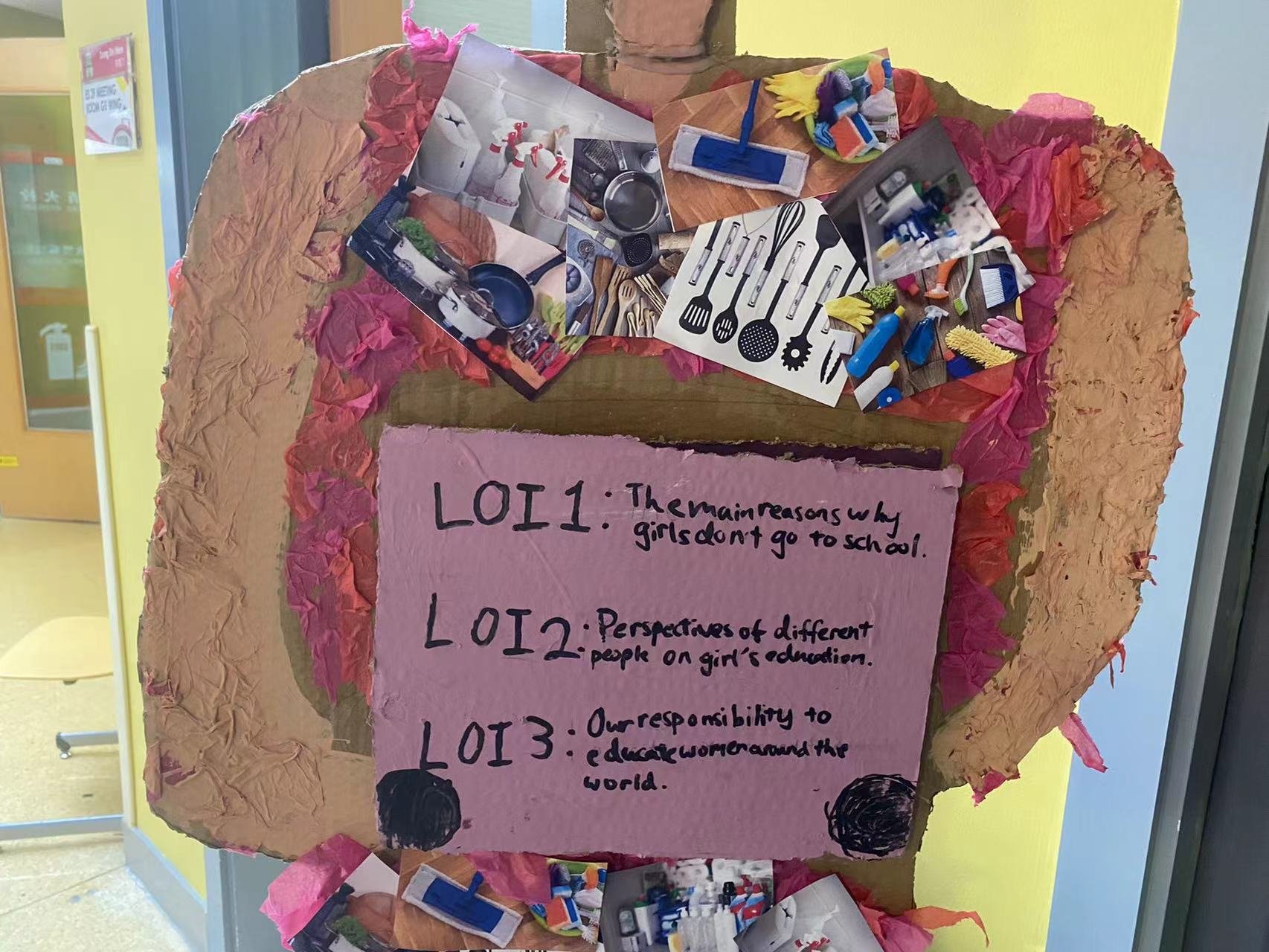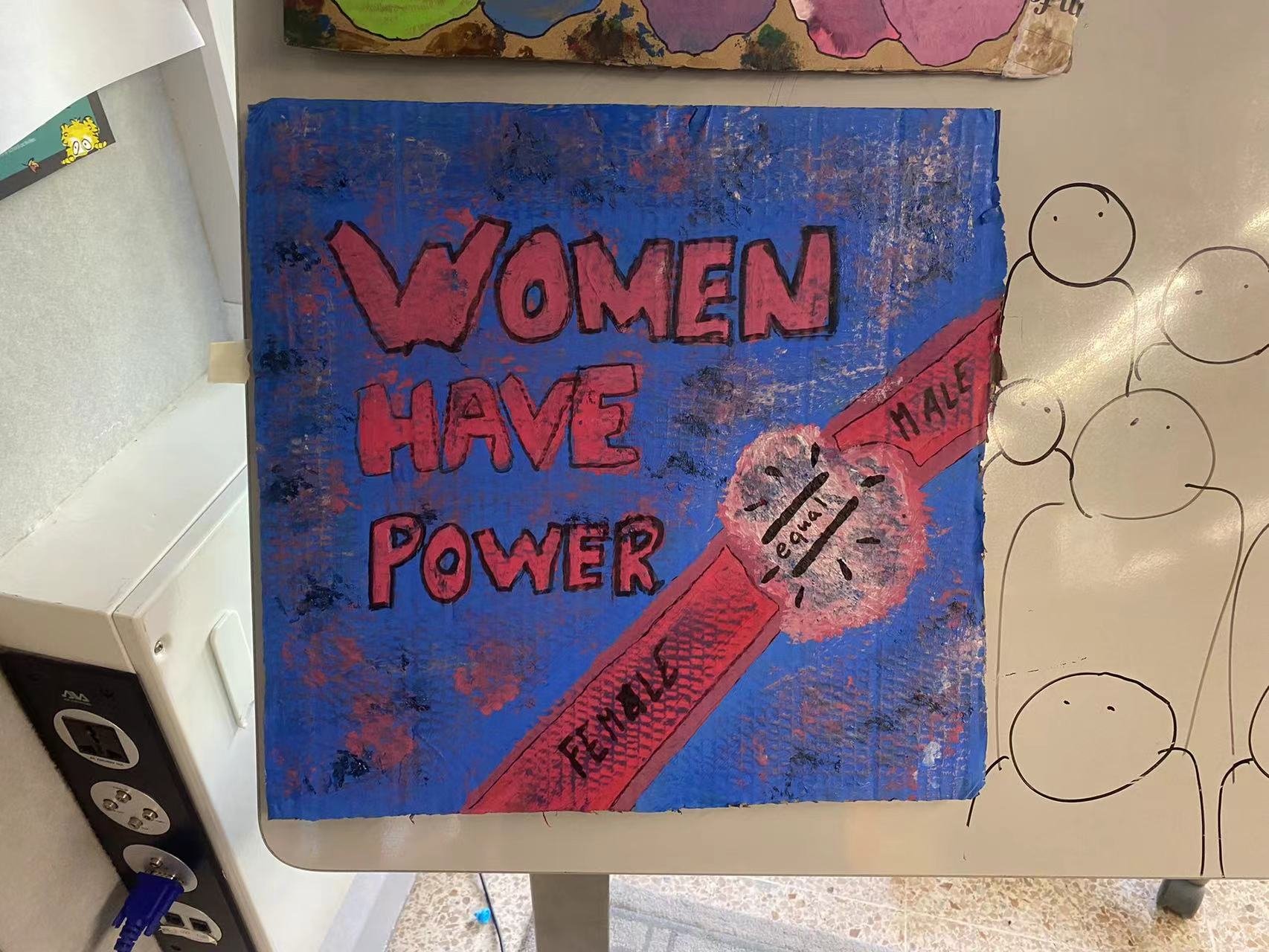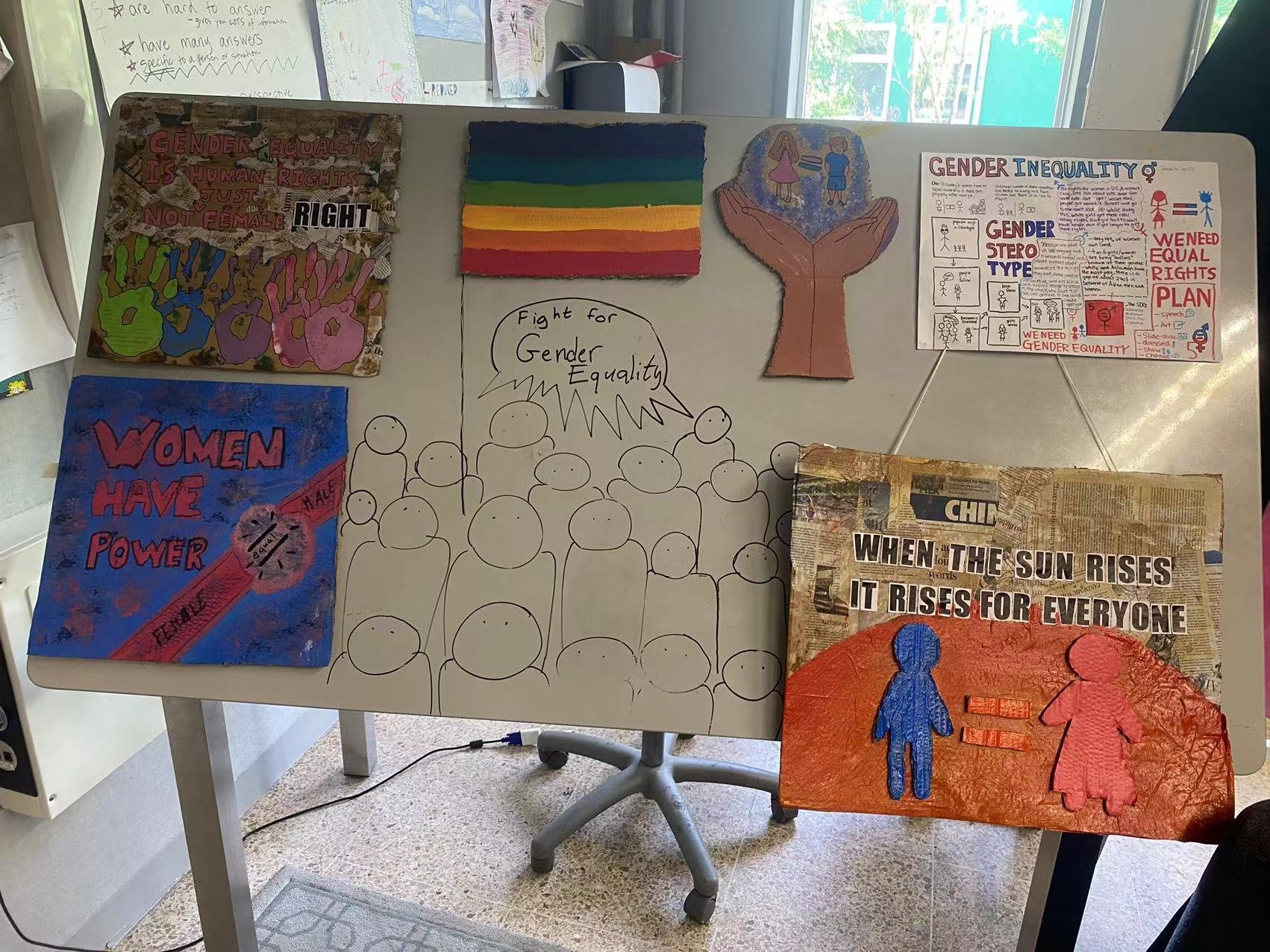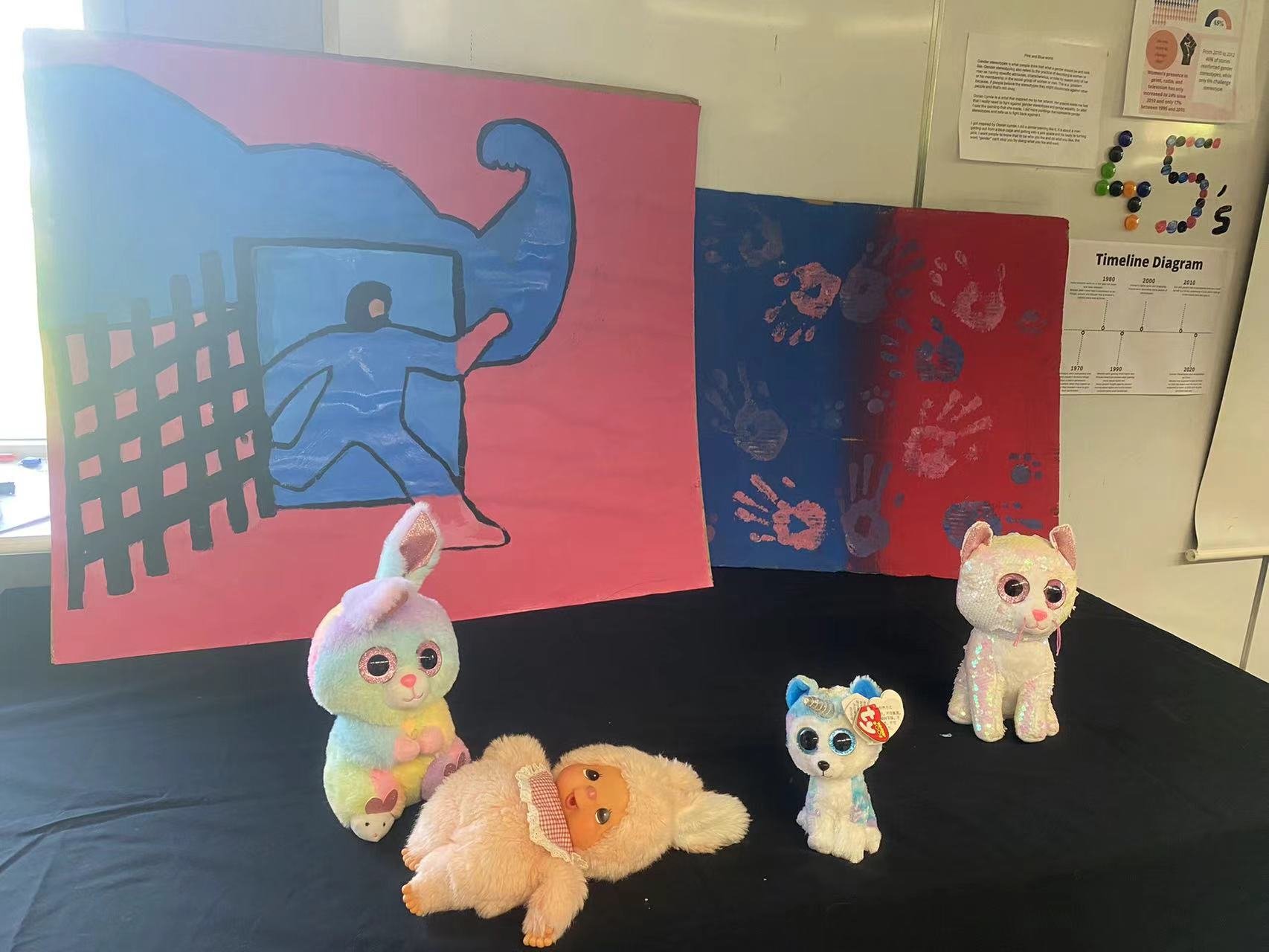Art for Impact: Rethinking the PYP Exhibition
One student exhibit at this year’s grade 5 PYP Exhibition at the Western Academy of Beijing.
Grade 5 students at the Western Academy of Beijing (WAB) have a special opportunity to get creative with their International Baccalaureate PYP exhibition. Art has taken center stage and has become a frame for expressing a synthesis of student learning.
Intrigued? This novel approach to the PYP exhibition is worthy of your attention.
Teacher Laurel Caster, a grade 5 classroom teacher who has been at WAB for four years, explains how the exhibition process unfolds over two units: “We work with Inspire Citizens through two units called ‘Sharing the Planet’ and ‘How we Express Ourselves’. Steve, Aaron and Kavita come in and do provocations with the students to kickstart their thinking, and this year Steve introduced the thinking routines of ‘see/think/feel’ in relation to the ‘heart/head/hands’ Empathy to Impact approach.”
Provocations typically include visual art, stories and poetry. Students engage with artifacts (like a photograph of Banksy’s street art) and reflect on core questions (such as: What might Banksy have cared about? What inspired him to create this piece of art? What might Banksy have needed to research before creating this piece? How is the artist expressing their ideas? What is the message? How could the audience interpret the message?).
Once students understand the idea of art as an expression of knowledge or ideas, they choose an issue for the “Sharing the Planet” unit and engage in group research experiences. They capture their central ideas and lines of inquiry based on the questions they want to pursue and know more about.
“At the end of the unit, we start to look at how they will express everything they have learned. This is the central idea of the next unit, that artists can express their views in a variety of ways,” explains Laurel.
The idea of art as a powerful form of communication has been well-established for students at this point in the learning journey, and students are able to engage in a deep investigation of an artist who inspires them. They conduct research, reflect on that person’s art, and also decide how they will express themselves and their learning.
The students are then able to choose any artistic medium and format to convey what they have learned in these two units, and their art becomes the core of the PYP exhibition.
“This year, I had students reflecting on the effects of war on children, gender stereotypes, women’s education and sustainable energy,” reflects Laurel. “The group that investigated the effects of war on children created a big cardboard room for their art installation. At the back of the room there was a rainbow and each band was a collage related to child soldiers. One band was all images of weapons. Another was images of money. One side of the installation was focussed on what child soldiers had to deal with and experience, and the other was about what child soldiers missed out on because of their circumstance (things like toys, electronics and books). It was really powerful.”
The students’ art was curated into a central exhibition where they could present their learning. Students created artist’s statements to accompany their creative work; the statements involved three paragraphs based on these questions:
what is the issue?
why is the issue important and why should we care?
who were you inspired by in creating your art?
“When we’re getting ready to create the art and the students are thinking about what message they want to create, it’s so electric. The energy is electric and the kids are excited. Exhibition is hard and the research part can feel long and arduous. When we get to the creative stage, the kids are excited and ready to go. The students get me excited about what they’re doing and we feed off each other,” Laurel comments.
Throughout the two-unit experience, Inspire Citizens facilitators support some lessons and guest speakers are also involved. This year a student’s father who works for the United Nations spoke to the students about the Sustainable Development Goals and about child soldiers in South Sudan.
“We couldn’t do this without Inspire Citizens,” says Laurel. “They act as art mentors for the students, asking students questions and using thinking routines to help students go deeper with their investigations and thinking. This year, Steve and Ivy came in every Friday and also helped set up the installation.”
The entire grade 5 team, including all teachers, educational assistants and learning specialists are involved in supporting the fifth grade students towards success with their PYP exhibition.
“It’s a collaborative team effort,” says Laurel. “We all care about the students and facilitating deep learning as well as experience with being creative and producing thought-provoking art. It’s pretty incredible.”

